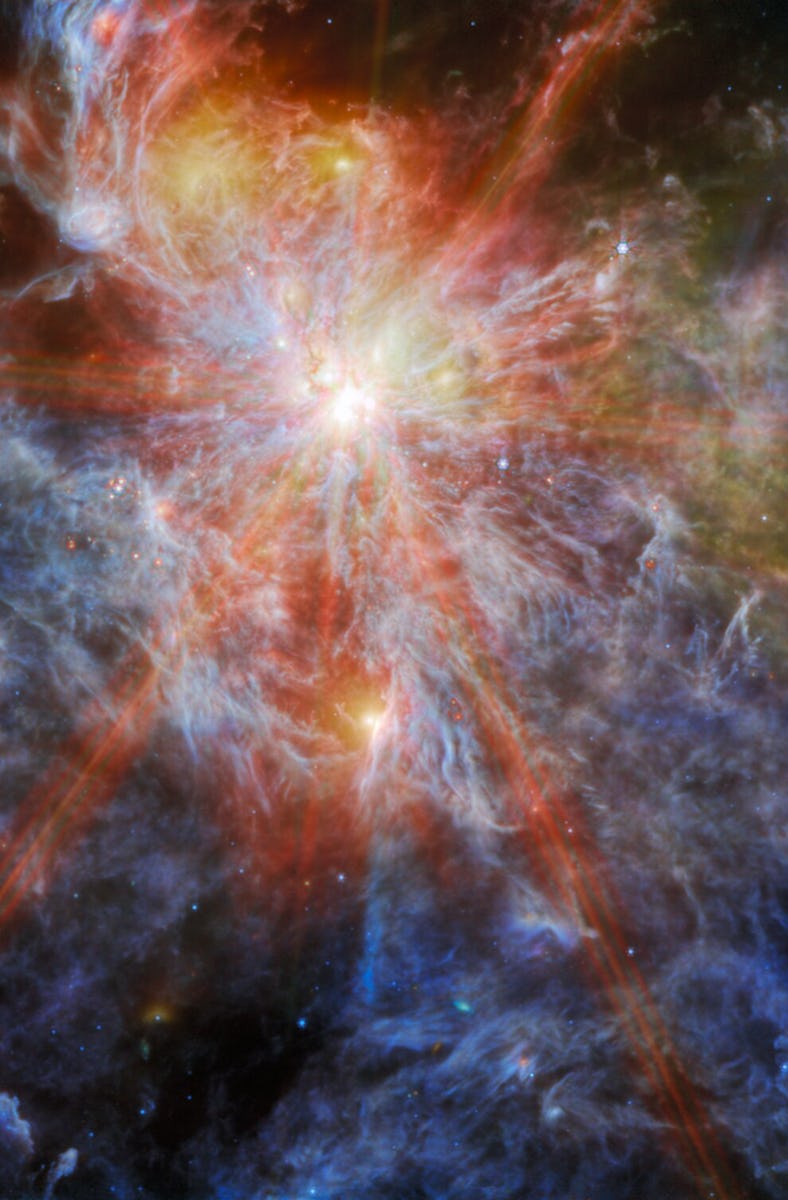This Dazzling Nebula Reveals A Glimpse of An Infant Universe Bursting With Stars
A sky full of stars.

The James Webb Space Telescope (JWST) recently peered into one-third of a unique nebula.
The revolutionary telescope studies the cosmos in the infrared, a part of the electromagnetic spectrum that is unseen to the human eye. When objects are extremely hot, like fire, they emit light that we can see. But when they aren’t as hot, they emit heat, which is invisible to us but visible to instruments that can pick up infrared light, such as the JWST telescope. The newly published JWST image features a portion of the N79 nebula, a giant cloud of cosmic dust that forms the beginning and end of stars.
The N79 South region of the N79 nebula, located in the Large Magellanic Cloud, shines in this new James Webb Space Telescope image. The observatory’s MIRI instrument captured the data for the image.
A bright star at the top center of the image is emitting ultraviolet radiation, which makes the gas around it warmer and charged. JWST's Mid-Infrared Instrument (MIRI) can detect this.
The prominent beams of light seen in red, however, are artifacts or residual visuals from the photo-taking process. In this case, the organization of JWST’s mirrors creates a six-prong effect on objects with exceptional and concentrated brightness. In fact, if you come across a space image and want to play a game of ‘guess that space telescope,’ JWST images will show bright points with six diffraction spikes, while Hubble will show four.
Gorgeous artifacts aside, numerous baby bright stars in this region of the N79 nebula are emitting intense ultraviolet light into the gas wafting around between them. This causes the gas, which was once neutral, to lose or gain electrons and become charged, creating the glowing regions.
The Large Magellanic Cloud, a satellite galaxy of the Milky Way and home to N79, is only about 200,000 light-years away. Because light has a fixed speed, the light from celestial objects is like a time capsule. Objects that are closer to Earth appear to us as they looked in the recent past, while those farther away are showing astronomers a glimpse of an older time. Studying phenomena like those inside the Large Magellanic Cloud may reveal secrets to what the universe was like when it was just a few billion years old. At that time, star formation in space was at its peak.